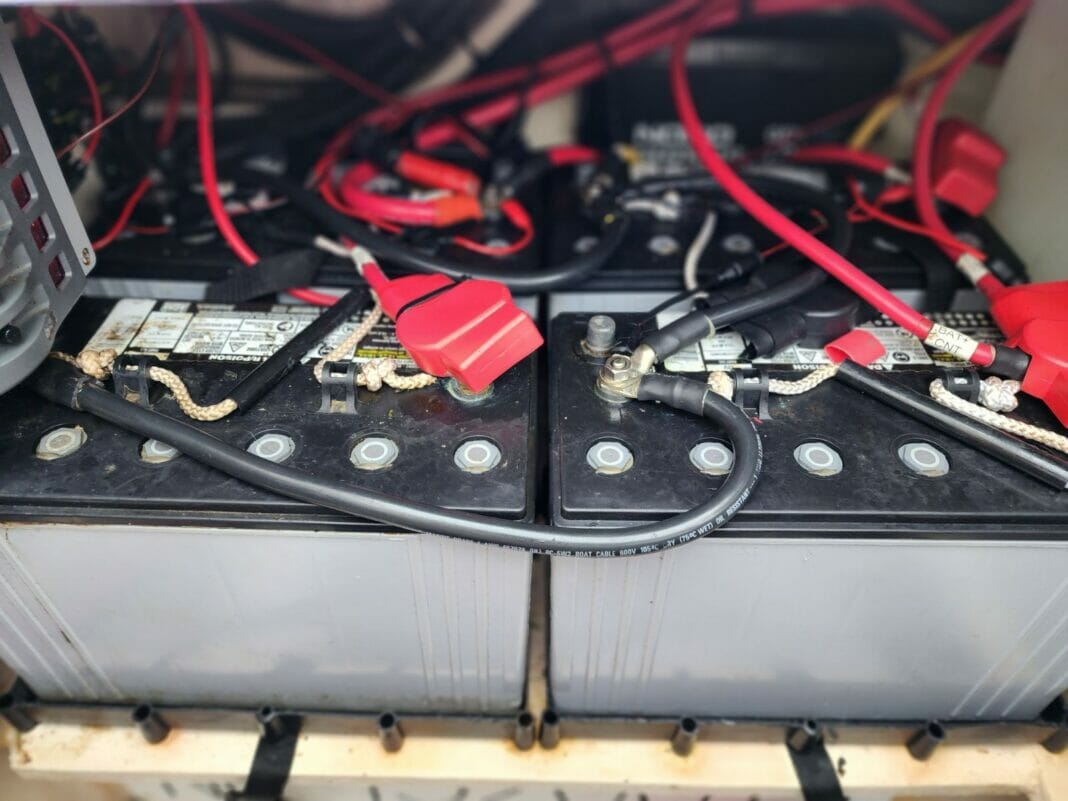The marine battery is an essential component of any boat’s electrical system, providing power to a variety of items including navigation equipment, lighting, and engine starting. It’s crucial to understand the basics of marine battery selection, installation, and maintenance to ensure reliable, safe, and efficient operation of your boat’s electrical systems. This article will guide you through marine battery essentials and address what you need to know.
Types of Marine Batteries
There are three main types of marine batteries: starting batteries, deep-cycle batteries, and dual-purpose batteries.
Starting Batteries
These batteries are designed to deliver a high burst of current to start the boat’s engine. They have a large number of thin lead plates that enable them to discharge high currents quickly. However, they are not suitable for powering electrical devices for extended periods.
Deep-Cycle Batteries
Deep-cycle batteries are designed to provide a steady amount of current over a long duration. They have thicker lead plates, allowing them to be discharged and recharged repeatedly without causing damage. Deep-cycle batteries are ideal for powering electrical devices like trolling motors, equipment, and appliances on board.
Dual-Purpose Batteries
As the name suggests, dual-purpose batteries combine the functions of starting and deep-cycle batteries. They can provide the high current needed for engine starting while also supplying power for electrical devices on board. Although they may not perform as well as dedicated starting or deep-cycle batteries, they offer a convenient, all-in-one solution for boaters with limited battery storage space.
Marine Battery Size and Capacity
Marine batteries come in various sizes and capacities to accommodate different types of boats and electrical load requirements.
Battery Group Size
The battery group size is a standardized classification system that indicates the physical dimensions of the battery. Common marine battery group sizes include 24, 27, and 31. The appropriate group size will depend on your boat’s battery compartment size and the specific battery manufacturer’s recommendations.
Ampere-Hour (Ah) Rating
The capacity of a marine battery is measured in ampere-hours (Ah), which signifies the amount of current the battery can supply for an hour before being completely discharged. A higher Ah rating indicates a larger battery capacity, which can power more electrical devices or last longer under the same load. When choosing a marine battery, it’s essential to consider your boat’s electrical demand and select a battery with adequate capacity to supply the required power.
Battery Maintenance and Safety
Proper maintenance and safety precautions are necessary to ensure optimum battery performance, extend service life, and avoid potential hazards.
Periodic Inspection and Cleaning
Regularly inspect your marine battery for any signs of damage, leakage, or corrosion around the terminals. Keep the battery clean by wiping it down with a damp cloth and removing any dirt or deposits on the terminals. To prevent corrosion, it’s recommended to apply a thin layer of dielectric grease or petroleum jelly to the terminals after cleaning.
Charging and Maintaining Proper Water Levels
Regularly charging your battery will help it last longer and perform better. Use a quality marine battery charger designed for your specific type of battery to ensure safe and efficient charging. If you have a flooded lead-acid battery, it’s essential to maintain the proper electrolyte levels by adding distilled water as needed. Be sure to follow the manufacturer’s specific instructions regarding charging and electrolyte maintenance.
Safe Battery Storage and Ventilation
Make sure to store your marine battery securely in a well-ventilated battery box or compartment on your boat. This will protect the battery from physical damage, moisture, and excessive heat, which can all contribute to decreased battery performance and service life.
Follow Manufacturer’s Recommendations
Always refer to your marine battery manufacturer’s recommendations for installation, charging, maintenance, and safety precautions. Adhering to these guidelines will ensure maximum battery performance, longevity, and safety on board.
Understanding the essentials of marine batteries is crucial for any boat owner. By selecting the right type and size of battery, ensuring proper installation and maintenance, and prioritizing safety, you can optimize the performance and lifespan of your marine battery, providing your boat with reliable power for all of your on-the-water adventures.


